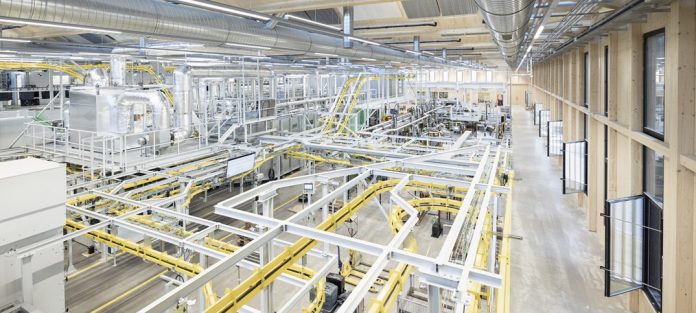
On 20 June 2022, the Association for the Decarbonization of Industry with representatives from industry, energy suppliers, the financial sector and research adopted a joint strategy with the aim of developing holistic approaches for CO2 cuts in industrial applications that can rapidly be implemented. The focus is on high-temperature processes and logistics. In both cases, hydrogen is to play a central role, albeit with different production processes.
The list of members of the Association for the Decarbonization of Industry is extremely diverse. In addition to the founding members Tech Cluster Zug, the regional energy and water supplier WWZ and Empa, the list includes the household appliance manufacturer V-ZUG, the industrial group Metall Zug AG, the recycling company AVAG, the pyrolysis plant manufacturer XGas Swiss, private market asset manager Partners Group, Accelleron Industries, ABB’s turbocharging division, medtech company SHL Medical, VZ Depotbank AG, specialty chemicals company Sika, mobility company AMAG Group, technology group Siemens and Holcim as a provider of construction solutions. Although active in very different sectors, the partners want to work together to advance rapid and holistic CO2 reductions in industrial applications.
To decarbonize high-temperature industrial processes, the third largest energy consumers in Switzerland, a novel hydrogen production process based on the splitting of hydrogen (chemically H2) from methane (CH4) – a process called methane pyrolysis – will be applied in a planned demonstration plant in Zug. Methane is the main component of fossil natural gas and biogas, but can also be produced synthetically from renewable hydrogen and CO2. In the planned demonstrator in the Zug Tech Cluster, pyrolytically generated hydrogen is to replace fossil natural gas in V-ZUG’s enamelling furnaces, in order to demonstrate with this pilot project how such applications can be decarbonized. In parallel, the hydrogen will also be used by other industrial partners in their processes. In contrast to previous industrial hydrogen production, the pyrolysis of methane does not produce CO2 as a by-product, but solid (powdered) carbon, which is to be further developed into a resource for construction and agriculture as part of the association’s activities, for example as an admixture in building materials or enrichment of humus.
Many companies in the manufacturing sector have saved natural gas with only minor restrictions on production. However, this will become more difficult in the future, as a survey by the Ifo Institute has shown.
59 percent of the companies use natural gas for their production processes. Of these, 75 percent have saved gas in the past six months without cutting production. “This high proportion is gratifying, but the differences between the sectors are significant,” says Karen Pittel, head of the ifo Center for Energy, Climate and Resources. “Moreover, the scope for further savings without a drop in production seems to be increasingly exhausted.”
14.1 percent of the companies had to reduce their production in order to use less gas, and 7.4 percent have not taken any measures to save gas so far. A particularly large number of companies have already cut back their production of printed matter (40 percent), in metal production and processing (35) and among textile manufacturers (25). In the chemical industry it is 17.3 percent of the companies and in glass/ceramics 14 percent.
For the next six months, only 38.8 percent of the companies state that they will be able to further reduce their gas consumption at the same level in production. After all, 41.4 percent of industrial companies say that saving gas is only possible if production also falls at the same time. In the glass/ceramics industry it is 69 percent, in the pharmaceutical industry it is 67 percent and in the chemical industry it is 57 percent. 12.3 percent of all industrial companies even state that in order to further reduce gas consumption, it is now necessary to stop production altogether. This applies in particular to food and feed manufacturers (27 percent), printed products and manufacturers of metal products (24 percent each).
Source: ifo Institute
